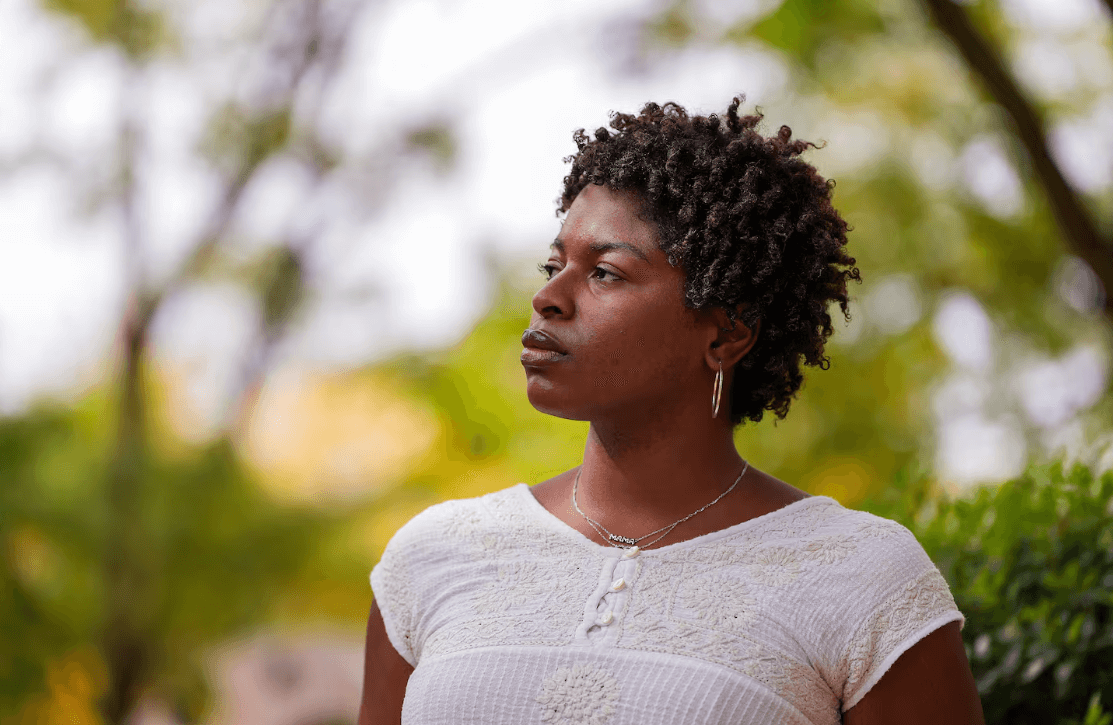“令人震惊”:自平权行动裁决以来,新英格兰学生哀叹校园多样性的下降

【中美创新时报2024 年 10 月 8 日编译讯】(记者温友平编译)布朗大学二年级学生 Eliana Rivas Marte 担心,在最高法院一年前禁止种族歧视招生后,校园可能会发生怎样的变化。今年秋天,她的担忧变成了现实,新生中有色人种学生的数量明显减少。《波士顿环球报》记者奥马尔·穆罕默德(Omar Mohammed)对此作了下述报道。
“说实话,这非常令人震惊,但并不奇怪,”Marte 来自波士顿,主修经济学和教育学,最近一个阴天的下午,在这个风景如画的校园里,来自历史上代表性不足的群体的学生人数比一年前下降了 9 个百分点。“平权行动对于确保有色人种学生进入常春藤盟校等大学非常重要,就像布朗一样。”
布朗大学是新英格兰地区几所顶尖大学之一,这些大学报告称今年秋季入学的有色人种学生数量急剧下降,尤其是那些自认为是黑人和西班牙裔的学生。
到目前为止,耶鲁大学和普林斯顿大学等大学的表现要好一些。高等教育专家表示,现在根据新数据得出长期结论还为时过早。
但对布朗大学、麻省理工学院和阿默斯特学院学生的采访表明,他们对校园多样性的未来深感不安,尤其是在精英院校。
学生们担心,有色人种学生人数减少可能意味着班级缺乏来自不同背景的同学的更广阔视角。一些人担心有相似经历的人的社区和导师会减少。
其他人担心,如果这种趋势继续下去,高等教育可能会回到有色人种学生被排除在精英院校之外的时代。
来自纽约市的布朗大学二年级学生、黑人出版物《黑星杂志》的专栏编辑克拉丽莎·索恩-迪斯拉 (Clarissa Thorne-Disla) 表示,她在今年秋天入学之前就注意到了校园的变化数字被公布。
“走在校园里,靠近新生宿舍,你会发现黑人学生明显减少,”她说。
Thorne-Disla 说,布朗大学招收更多的黑人和西班牙裔学生很重要,这表明常春藤盟校对所有人开放。她对未来可能出现的像她这样的学生感到遗憾。
“我想我们在校园里看到的自己的身影会越来越少,这真的很可悲,”她说。
这样的担忧不仅限于有色人种学生。
19 岁的 Simon Rosenblum 是布朗大学一名来自纳什维尔的二年级学生,主修物理和数学,他担心大学生活可能会变得不那么丰富。他说,高分在布朗大学很常见,但学生多样性给课堂带来了对世界的不同看法,这为教育增添了色彩。
“有很多成绩好的人,”白人 Rosenblum 说。“这不是什么独特之处,但视角是独一无二的。多样性就是视角。”
布朗大学发言人布莱恩·克拉克表示,最高法院的裁决预计今年录取的有色人种学生数量会减少。
克拉克在回答《波士顿环球报》的电子邮件提问时表示:“布朗大学承诺采取合法措施,确保申请者队伍多元化、人才济济,这对避免种族和社会经济多样性急剧下降至关重要。”
克拉克表示,为了帮助录取更多有色人种学生,该校将重新引入标准化考试成绩作为入学要求的一部分,克拉克表示,该分数将“根据学生的背景进行解读”。布朗大学还将加强大学预科项目,并与社区组织合作,帮助吸引更多不同种族的学生。
麻省理工学院还表示,法院的判决导致该校黑人、西班牙裔、印第安人或太平洋岛民新生人数下降了 9 个百分点。
来自加纳阿克拉的 18 岁麻省理工学院新生纳安娜·安南 (Naana Annan) 表示,去年 6 月对哈佛大学和北卡罗来纳大学教堂山分校招生实践的两起诉讼做出的裁决让她开始思考是否要去美国上大学。
“这确实让我犹豫了,但我相信这不会对入学人数产生太大影响。但不幸的是,情况恰恰相反,”她说。
安南表示,校园的多样性有助于在麻省理工学院等机构塑造更具全球意识的学生群体。
“麻省理工学院是一所工程学院。我们正在制定解决方案。我们正在思考如何让世界变得更美好。世界上有如此多不同的人,如此多样化的人,”她说。“如果他们没有发言权,那么我们在制定这些解决方案时将无法考虑到他们。”
来自迈阿密的麻省理工学院物理和计算机科学专业大四学生 Elise Wingard 发现,有色人种学生(尤其是黑人新生)的比例较前几年有所下降,这让她感到“不安”。她说,校园的多样性丰富了她的教育。
“我从来自世界各地的学生身上学到了很多关于他们文化的知识,”自称是混血儿的 Wingard 说。“此外,我还了解到他们如何处理问题,以及如何从技术上解决问题。所以我认为这非常重要。”
如果没有平权行动,她希望大学能在未来几年找到吸引更多有色人种学生的方法。
麻省理工学院招生和学生金融服务主任 Stu Schmill 在最近接受《环球报》采访时承认,校园有色人种学生人数的下降引起了剑桥校区的担忧,并重申了学校对多样性的承诺。
“我想强调学术卓越和多样性是共存的,”他说。
在阿默斯特学院,21 岁的大四学生亚当·约翰逊-希尔在入学指导期间注意到了变化。这所位于马萨诸塞州西部的大学报告称,今年新生中有 38% 是少数族裔学生,而 2023 年这一比例为 47%。
“我看到学生们走进校园,少数族裔学生的数量明显下降,”来自纽约市、黑人学生会领导人约翰逊-希尔在电话采访中说。
约翰逊-希尔说,他喜欢就读阿默斯特的部分原因是多年来他从各种高年级学生那里得到了指导和辅导。
“对于未来的班级,考虑到班级的多样性较低,这种情况将会减少,”他说。
阿默斯特学院校长迈克尔·埃利奥特上个月在写给大学的一封信中表示,平权行动后的招生形势“打击了我们建立多元化学习社区的努力”。他说,该机构致力于“培养来自各个背景的优秀学生”。
阿默斯特学院有大约 1,900 名学生。约翰逊-希尔说,对于一些可能来自美国其他地区的学生来说,可能需要一段时间才能适应,因此拥有多元化的校园就显得更加重要。
“当你身边没有和你长得像、背景相似的人时,建立社区会更加困难,”他说。“有和你经历过类似经历或有过类似经历的人给你建议会很有帮助。”
题图:布朗大学二年级学生 Clarissa Thorne-Disla 说:“我想我们在校园里看到的自己会越来越少。”Barry Chin/Globe Staff
附原英文报道:
‘Jarring’: New England students lament a plunge in diversity at campuses since affirmative action ruling
By Omar Mohammed Globe Staff,Updated October 8, 2024
Clarissa Thorne-Disla, a Brown University sophomore, said, “I guess we’ll just see less of ourselves around campus.”Barry Chin/Globe Staff
PROVIDENCE — Brown University sophomore Eliana Rivas Marte worried how the campus might change after the Supreme Court banned race-conscious admissions a year ago. This fall, her fears were realized when the class of incoming freshmen included significantly fewer students of color.
“It was very jarring, honestly, but not surprising,” Marte, who is from Boston and studying economics and education, said on a recent cloudy afternoon on this picturesque campus, which saw the number of students from historically underrepresented groups plunge 9 percentage points from a year ago. “Affirmative action was so important in ensuring that students of color were entering universities like the Ivy League’s, like Brown.”
Brown is among several top universities in New England to report sharp declines among students of color, particularly those who identify as Black and Hispanic, enrolling this fall.
Colleges such as Yale and Princeton have fared better so far. Higher education experts say it’s too soon to draw long-term conclusions based on the new data.
But interviews with students at Brown, the Massachusetts Institute of Technology, and Amherst College revealed deep unease about the future of diversity on campuses, especially at elite institutions.
The students fear that fewer students of color could mean classes that lack wider perspectives from peers who hail from different backgrounds. Some were concerned about a decline of community and mentors from those who share similar experiences.
Others worried that if the trends continue, higher education could harken back to an era when students of color were excluded from elite institutions.
Clarissa Thorne-Disla, a Brown sophomore from New York City and a section editor at the Black publication The Black Star Journal, said she noticed a change on campus this fall even before the enrollment numbers were revealed.
“Walking around campus, being near the freshmen dorms, you could tell there’s significantly less Black students,” she said.
Thorne-Disla said having more Black and Hispanic students at Brown was important to show that access at Ivy League institutions was open to everyone. She lamented a possible future in which fewer students look like her.
“I guess we’ll just see less of ourselves around campus, which is really sad,” she said.
Such concerns extend beyond students of color.
Simon Rosenblum, 19, a Brown sophomore from Nashville studying physics and mathematics, worried that college life may become a less rich experience. High grades were typical at Brown, he said, but what added to the education was the different outlooks about the world that student diversity brings to classes.
“There is an abundance of people with good grades,” said Rosenblum, who is white. “That’s not a unique thing, but perspective is unique. Diversity is perspective.”
Brian Clark, Brown University’s spokesperson, said the college anticipated there could be fewer students of color admitted this year following the Supreme Court’s ruling.
“Brown’s commitment to implementing lawful measures to ensure a diverse, talented applicant pool and enrolled class was essential in avoiding a more precipitous decrease in racial and socioeconomic diversity,” Clark said in response to the Globe’s emailed questions.
To help admit more students of color, Clark said, the university will reintroduce standardized test scores as part of its requirement for admission that Clark said will be “interpreted in the context of a student’s background.” Brown will also ramp up college pathway programs and work with community-based organizations to help attract a more diverse group of students.
MIT also said the court decision was to blame for a drop of 9 percentage points in its cohort of first-year students who identify as Black, Hispanic, Native American, or Pacific Islander.
Naana Annan, an 18-year-old MIT freshman from Accra, Ghana, said the ruling last June, in two lawsuits challenging admissions practices at Harvard University and the University of North Carolina at Chapel Hill, made her question whether to attend college in the United States.
“It definitely did make me pause, but I was confident that it wouldn’t affect enrollment numbers that much. But unfortunately the opposite of that happened,” she said.
Annan said diversity on campus can help shape a more globally minded student body at institutions such as MIT.
“MIT, it’s an engineering school. We are making solutions. We are thinking about how we can make the world a better place. And the world is inhabited by so, so many different people and so many diverse people,” she said. “If they don’t have a seat at the table, then we will not be able to account for them when we are making these solutions.”
Elise Wingard, a senior at MIT from Miami studying physics and computer science, found it “disturbing” that the percentage of students of color, particularly among the incoming Black freshmen, fell from previous years. Diversity on campus has enriched her education, she said.
“I’ve learned a lot from students from different places around the world about their cultures,” said Wingard, who described herself as mixed race. “Also, just in general about how they approach problems and technically solving things. So I think that’s very important.”
Without affirmative action, she hopes the university can find ways to attract more students of color in years to come.
Stu Schmill, MIT’s dean of admissions and student financial services, acknowledged in a recent Globe interview that the decline in the numbers of students of color on campus raises concern on the Cambridge campus and reiterated the school’s commitment to diversity.
“I want to emphasize academic excellence and diversity coexist,” he said.
At Amherst College, Adam Johnson-Hill, a 21-year-old senior, noticed a shift during orientation. The university, based in Western Massachusetts, reported that 38 percent of this year’s incoming freshman class identified as students of color compared with 47 percent in 2023.
“I was seeing the students come on campus and there was a visible decline in the number of minority students of color,” Johnson-Hill, who is from New York City and a leader of the Black Student Union, said in a phone interview.
Johnson-Hill said part of why he enjoyed attending Amherst was the guidance and mentorship he received from a variety of older students over the years.
“For future classes, there is going to be a dearth of that given the fact that it’s just a less diverse class,” he said.
Michael Elliott, president of Amherst College, said in a letter to the university last month that the admission landscape, post-affirmative action, struck “at the heart of our efforts to build a diverse learning community.” He said the institution was committed to “educating exceptional students from all backgrounds.”
Amherst has a student body of about 1,900. Johnson-Hill said for some students who may be coming from other parts of the country, it can take time to adjust, making it even more critical to have a diverse campus.
“When you don’t have people who look like you, have a similar background as you, it can be more difficult to build community,” he said. “It helps to have people that are going through a similar experience with you or have gone through a similar experience to give advice.”

